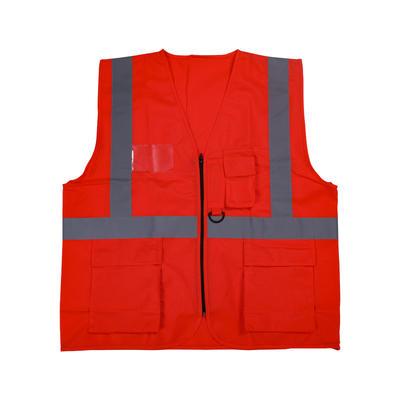The safety of workers in various industries often hinges on their visibility, particularly in low-light conditions. Reflective safety vest manufacturers play a pivotal role in this regard, crafting garments that enhance visibility and, by extension, safety. However, the effectiveness of these vests is contingent upon their reflective performance, which must be rigorously tested to meet industry standards.
Testing the reflective performance of safety vests produced by reflective safety vest manufacturers involves a series of standardized procedures designed to evaluate the vests' ability to reflect light toward its source. This is crucial for ensuring that workers are visible to drivers and other individuals, even in conditions where ambient light is limited.
The process begins with the selection of appropriate materials. Reflective safety vest manufacturers use retro-reflective materials, typically composed of tiny glass beads or micro prismatic structures embedded in a flexible material, which are responsible for the reflective properties of the vests. These materials are then subjected to a series of tests to determine their light-reflecting capabilities.
One of the primary tests conducted by reflective safety vest manufacturers is the photometry test. This test measures the amount of light reflected by the vest under specific conditions, including the angle of incidence and the wavelength of light. The vests are illuminated with a light source, and the reflected light is captured by a photometer. The results are then compared against established benchmarks to determine if the vests meet the required levels of reflectivity.
Another critical test is the durability test, which assesses the vests' ability to maintain their reflective properties over time. Reflective safety vest manufacturers subject their products to a series of abrasion, laundering, and environmental exposure tests. These tests simulate the wear and tear that the vests will experience in real-world conditions, ensuring that the reflective materials do not degrade or lose their effectiveness.
In addition to these tests, reflective safety vest manufacturers also evaluate the vests' colorfastness, ensuring that the colors used in the vests do not fade or bleed when exposed to sunlight, water, or other environmental factors. This is important because the color of the vest can also play a role in its visibility.
Moreover, the design and construction of the vests are also scrutinized. Reflective safety vest manufacturers must ensure that the reflective materials are strategically placed and adequately sized to maximize visibility. This includes testing the vests on various body types to ensure that the reflective areas are always visible, regardless of the wearer's posture or movement.
Finally, reflective safety vest manufacturers must adhere to a set of regulatory standards and guidelines, such as those set forth by the American National Standards Institute (ANSI) or the International Safety Equipment Association (ISEA). These organizations establish the minimum performance criteria for reflective safety vests, and manufacturers must ensure that their products meet or exceed these standards.
In conclusion, the testing of reflective performance in safety vests by manufacturers is a multifaceted process that encompasses material selection, photometry, durability, colorfastness, design, and regulatory compliance. By subjecting their products to these rigorous tests, reflective safety vest manufacturers can ensure that their vests provide the highest level of visibility and, consequently, safety for workers in a variety of environments.


